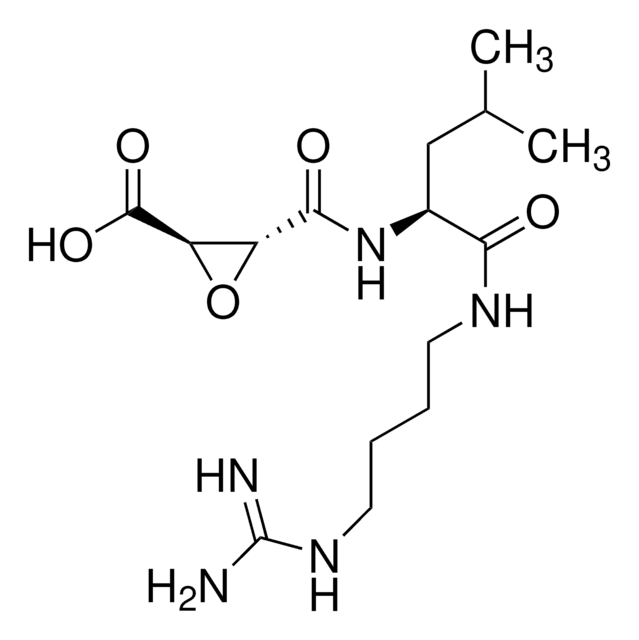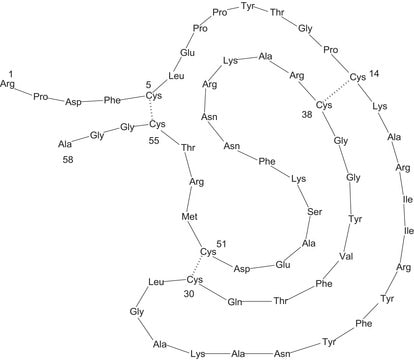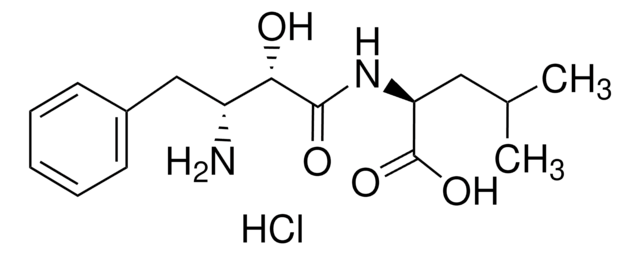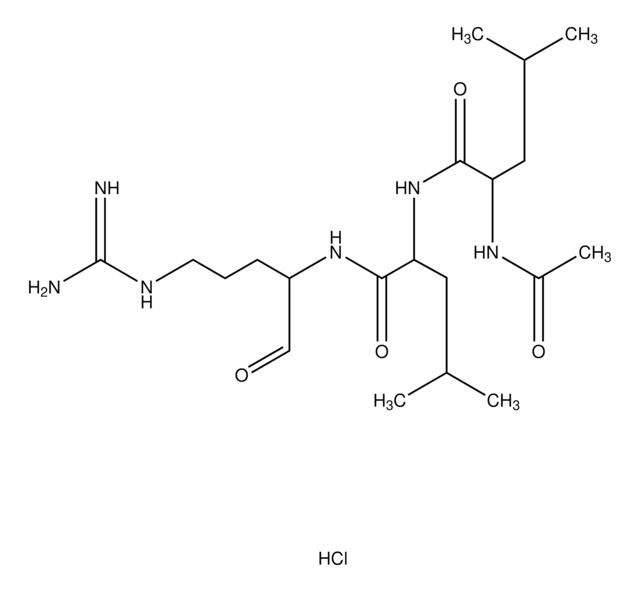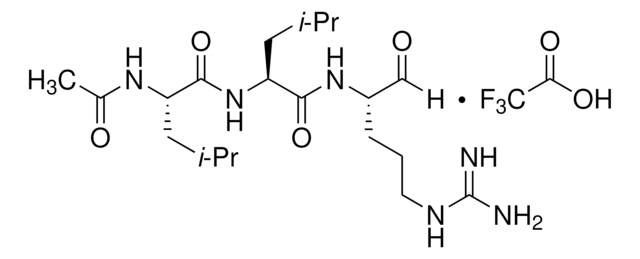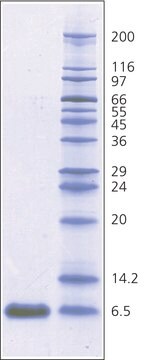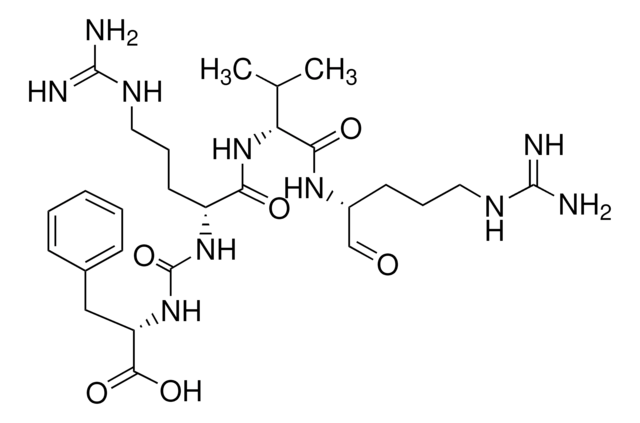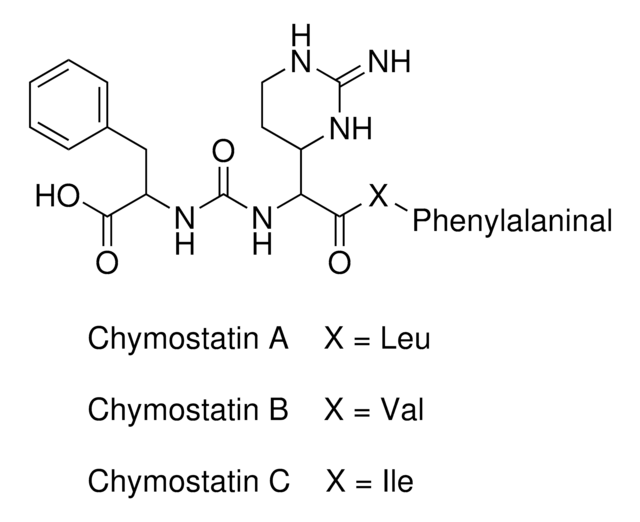L5793
Leupeptin
powder, ≥95% (HPLC)
Synonym(s):
Leupeptin hemisulfate salt, Acetyl-Leu-Leu-Arg-al, N-Acetyl-L-leucyl-L-leucyl-L-argininal hemisulfate salt
About This Item
Recommended Products
product name
Leupeptin, BioUltra, microbial, ≥95% (HPLC)
biological source
microbial
Quality Level
product line
BioUltra
assay
≥95% (HPLC)
form
powder
solubility
H2O: 50 mg/mL
storage temp.
−20°C
SMILES string
OS(O)(=O)=O.CC(C)C[C@H](NC(C)=O)C(=O)N[C@@H](CC(C)C)C(=O)N[C@@H](CCCNC(N)=N)C=O.CC(C)C[C@H](NC(C)=O)C(=O)N[C@@H](CC(C)C)C(=O)N[C@@H](CCCNC(N)=N)C=O
InChI
1S/2C20H38N6O4.H2O4S/c2*1-12(2)9-16(24-14(5)28)19(30)26-17(10-13(3)4)18(29)25-15(11-27)7-6-8-23-20(21)22;1-5(2,3)4/h2*11-13,15-17H,6-10H2,1-5H3,(H,24,28)(H,25,29)(H,26,30)(H4,21,22,23);(H2,1,2,3,4)/t2*15-,16-,17-;/m00./s1
InChI key
CIPMKIHUGVGQTG-VFFZMTJFSA-N
Looking for similar products? Visit Product Comparison Guide
Biochem/physiol Actions
Analysis Note
Storage Class
11 - Combustible Solids
wgk_germany
WGK 3
flash_point_f
Not applicable
flash_point_c
Not applicable
ppe
Eyeshields, Gloves, type N95 (US)
Certificates of Analysis (COA)
Search for Certificates of Analysis (COA) by entering the products Lot/Batch Number. Lot and Batch Numbers can be found on a product’s label following the words ‘Lot’ or ‘Batch’.
Already Own This Product?
Find documentation for the products that you have recently purchased in the Document Library.
Customers Also Viewed
Our team of scientists has experience in all areas of research including Life Science, Material Science, Chemical Synthesis, Chromatography, Analytical and many others.
Contact Technical Service

